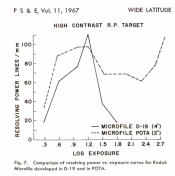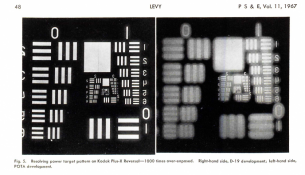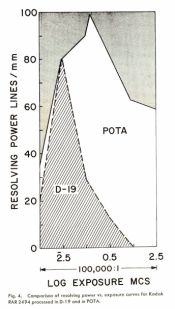It is quite unlikely that anyone can come up with any developer that would develop Delta 3200 to real ISO 3200, not because people aren't smart, but rather because the inventors of DD-X and TMAX weren't dumb either. If ID-11/D-76 gives you ISO 1000, it is possible for an optimized developer to give you ISO 1200, 1300, maybe 1600 with this film, but not twice that.Ilford Delta speed seems to cause huge confusion. It's very simple. Ilford use ID11 for all their ISO speed tests. Using ID11 my tests indicate that yes indeed its ISO speed is 1000. But EI is your own personal speed and is dependant on the devloper used and your own process. I find I get 1600 with DDX and I get 3200 with Microphen. Grain is much bigger with Microphen than with DDX so DDX produces much smooither looking prints than Microphen but certainly not what I would call fine grain.
It's the activity of the developer, not its absolute pH which to some extent determines film grain. Remember that Amidol operates in acidic environment, but nobody ever praised Amidol for its fine grain properties, while people happily used PPD which lost them two to three stops.I may be wrong but my impression is that the closer to neutral PH a developer is, the finer the grain. Its important to remember that the grain we talk about is actually grain clumps and its my belief that the further away from neutral PH(7) a developer is, the greater the grain clumping. The increased hydrogen ionisation cause greater attraction of real grains to each other forming bigger grain clumps. The developer is "more active".
Grain is a difficult animal, and there is no single or easy to follow strategy of the "the more you do this the better it gets" kind how to improve granularity.



 It was unusual to say the least.
It was unusual to say the least.


